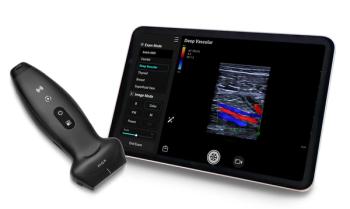
Building a digital front door to weather the COVID-19 pandemic
The COVID-19 crisis has exposed significant shortcomings in our ability to provide services.
Despite the US healthcare system being among the best in the world, the COVID-19 crisis has exposed significant shortcomings in our ability to provide services in the face of a novel infection. While the demand certainly overwhelmed some parts of our medical community, the pandemic disrupted service lines far beyond the outlines of an infectious disease.
Without adequate personal protective equipment and the ability to connect with patients virtually, our capacity to deliver care was paralyzed almost overnight. The effect has been a significant (even if still hard to measure) impact on morbidity and mortality and has included a crippling of the operations and financial stability of health care providers.
Unfortunately, not only are we still grappling with the first wave of infections, but we will likely see recurring outbreaks of COVID-19 (perhaps in combination with influenza this fall) interspersed with periods of relative respite wherein there may be just as much urgency to provide access to non-COVID care. Indeed, the survival of provider practices may depend on their ability to alternate between these worlds. The strategy they put in place during the window between recovery and a potential resurgence will have far-reaching implications for continuity of both patient access and practice operations.
The first step in planning a go-forward strategy is to ascertain what needs to be done today in the midst of this initial wave. Given the concern of many patients around in-person visits, as well as the logistical and clinical considerations for those who are comfortable returning to an outpatient appointment, it is critical that provider groups rapidly develop a means of engaging patients virtually-whether that be a video-based platform or simple phone-based model.
In the short term, in addition to leveraging this technology for patients experiencing COVID-19 symptoms, providers should offer these appointments to patients whose care depends on regular check-ins that may have been delayed over the last several months.
Hopefully, as the pace of infections slows over the summer, comprehensive patient access can resume in a way that both virtual and in-person appointments are visible and bookable online. That way, patients can self-schedule and not overwhelm administrative and clinical operation support services on the phone. Numerous health systems and group practices over the last few years have successfully modernized their digital “front doors” with consumer-friendly care search and scheduling offerings.
The best platforms offer clinical keyword-based search functionality and enable patients to filter search results based on a variety of criteria to find the right provider for their needs and preferences. This type of search technology also allows organizations to designate different destinations for different kinds of searches-for example, triaging a cough to different care settings (e.g. urgent care) or types of providers based on the time of year or local situation.
Over time, additional investments in patient access technology can further optimize clinical routing and load balancing within a provider group. Two types of integration are especially important. First, the website and online scheduling platform should tie to other channels of access, such as the front office phone and physician referral lines. This “multi-channel” approach ensures that information is consistent across the different places patients might seek information and appointments.
Second, within the digital front door, practices should integrate online scheduling with other technology solutions that can facilitate accurate routing and delivery of care. One example includes virtual assistants (i.e. chatbots) that can help patients navigate through relevant content using a series of questions to better discover the right site or source of care. By integrating solutions both across and within access channels, providers can offer a more cohesive and differentiated consumer experience at a time when both consumer expectations and competitive offerings are rising.
Providing access to medical care is a fundamental commitment that health care providers make to their patients. Maintaining that access will be a challenge over the upcoming months and requires opening new channels and destinations for care. A robust and integrated digital front door, combined with a strategy that facilitates access to both traditional and virtual visits, represents a key step in helping to ensure we continue to deliver the exceptional care that our patients deserve.
Gardner is co-founder and CEO of Kyruus.
Newsletter
Stay informed and empowered with Medical Economics enewsletter, delivering expert insights, financial strategies, practice management tips and technology trends — tailored for today’s physicians.


















